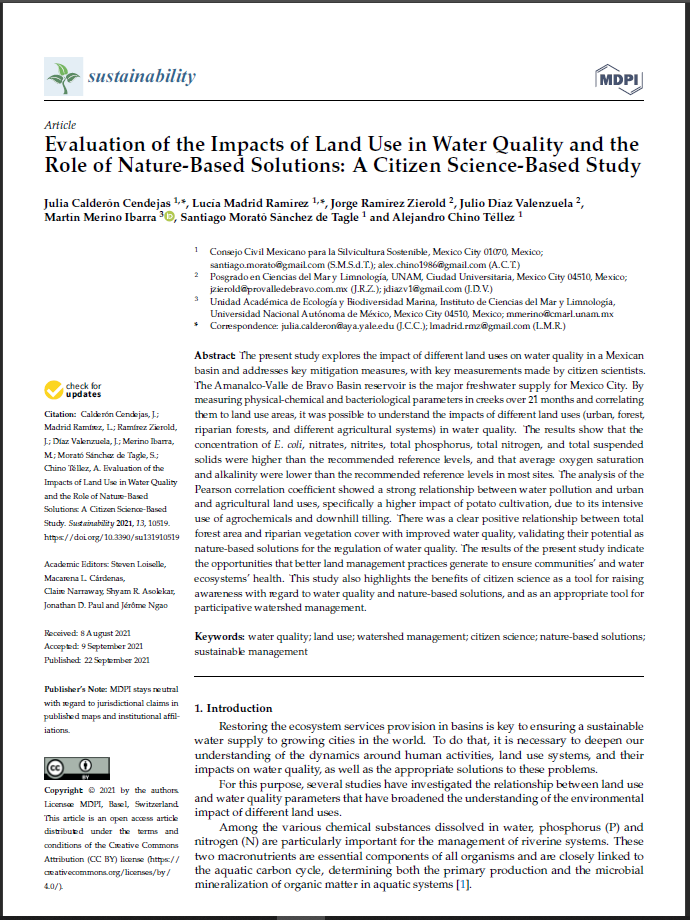
Autores: Lucía Madrid Ramírez, Julia Calderón Cendejas, Jorge Ramírez Zierold, Julio Díaz Valenzuela, Martín Merino Ibarra, Santiago Morató Sánchez de Tagle, Alejandro Chino Téllez
Año de publicación: 2021
País: México
Idiomas: Inglés
Editorial: MDPI
The present study explores the impact of different land uses on water quality in a Mexican basin and addresses key mitigation measures, with key measurements made by citizen scientists.
The Amanalco-Valle de Bravo Basin reservoir is the major freshwater supply for Mexico City. By measuring physical-chemical and bacteriological parameters in creeks over 21 months and correlating them to land use areas, it was possible to understand the impacts of different land uses (urban, forest, riparian forests, and different agricultural systems) in water quality.
The results show that the concentration of E. coli, nitrates, nitrites, total phosphorus, total nitrogen, and total suspended solids were higher than the recommended reference levels, and that average oxygen saturation and alkalinity were lower than the recommended reference levels in most sites. The analysis of the Pearson correlation coefficient showed a strong relationship between water pollution and urban and agricultural land uses, specifically a higher impact of potato cultivation, due to its intensive use of agrochemicals and downhill tilling.
There was a clear positive relationship between total forest area and riparian vegetation cover with improved water quality, validating their potential as nature-based solutions for the regulation of water quality. The results of the present study indicate the opportunities that better land management practices generate to ensure communities’ and water ecosystems’ health. This study also highlights the benefits of citizen science as a tool for raising awareness with regard to water quality and nature-based solutions, and as an appropriate tool for participative watershed management.